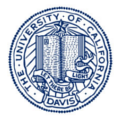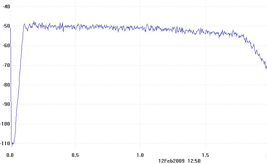
| Experiment Guide |
| 1. Shot noise Pre Lab |
| 2. Shot Noise |
| 3. Johnson noise Pre Lab |
| 4. Johnson Noise |
| 5. SR770 |
| Related Material |
| 1. Fluctuation-Disspiation from Callen (1951) |
| 2. Fourier Transforms |
| 4. Nyquist Paper |
| 5. Melissinos (2003) 125-133 |
| 6. MIT Experiment | 7. Giant mass Brownian motion |
| Useful Links |
| 1. Sources of noise |
| 2. Brownian Motion |
| 3. Agilent 34401 Manual |
| 4. PicoScope 4262 Manual |
| 5. Power Spectra |
Overview
Fundamental noise has both practical and fundamental physics aspects. How small a signal can you detect? In electronic measurements, we observe "signals," which must be distinctly above the "noise." Noise induced from outside sources may be reduced by shielding, filtering, and proper "grounding." Less noise means greater sensitivity to the desired signal, with signal to noise ratio as the figure of merit. However, there exist fundamental sources of noise which no clever circuit can avoid. This intrinsic noise is a result of the thermal jitter of the charge carriers and the quantization of charge. You will measure these two phenomena: the shot noise of electrons and of photons, and the Johnson noise in a resistor as a function of temperature above absolute zero.The shot noise lab can be completed in one afternoon. From your Johnson noise measurements you will derive the value of the Boltzmann constant, k. Johnson Noise and Brownian Motion are examples of the fundamental relation between fluctuation (in equilibrium) and dissipation (out of equilibrium). This interrelationship is still at the frontier of physics: of all the experiments in 122, this is the most fundamental.


